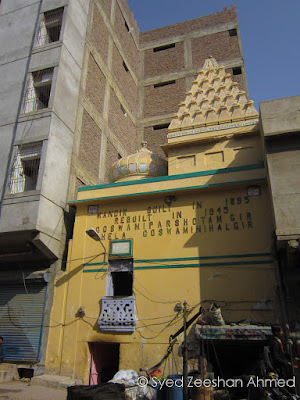
The Shiv temple’s shikhara (spire) and a smaller umbrella-esque structure immediately catches the attention. It was initially built way back in 1895, and was rebuilt in 1945.
By Zeeshan Ahmed
If you were to pass by this particular street in Tando Wali Mohammad area, in Hirabad, Hyderabad, I am quite positive that you will notice this building right away. Tucked in the middle of all these modern structures, and British-era buildings is a temple, whose shikhara (spire) and a smaller umbrella-esque structure right beside it, will immediately catch your attention. Just below the traditional spire you will see the long name of the temple: Goswamiparshotam Gir Chela Goswaminihal Gir. It was initially built way back in 1895, making it a century old at least. However, it was rebuilt in 1945.
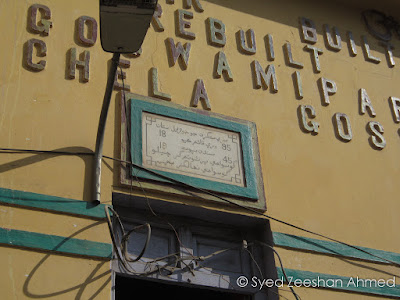
The narrow entrance to the temple is a bit lower than the street level, and so is its ceiling. Once you enter the passage you will notice an old water-tap on the left, and a door leading to a small room on the right. Just beside the door is a staircase which will lead you to the main sanctuary. If you look up you’ll see the interior of the spire, and it’s indeed quite beautiful in its own regard.
Soon, you’ll see a Hanuman statue, which, according to the elderly caretaker, Kishanchand, didn’t originally belong to this temple. “It was brought to me by some people, it was of no use to them. They wanted me to keep it in the temple….of course, I didn’t have any objection.”
The story of Kishanchand sahib is quite fascinating. Kishanchand, whose family had had been taking care of the temple for a while, couldn’t leave after the Partition. The rising communalism, and resulting violence in the neighborhood had forced Hindus to leave their ancestral homeland and migrate to India. Kishanchand sahib’s family, unfortunately, couldn’t. A sudden death in the family, and a series of other events had made them stay in Hyderabad. Kishanchand sahib was quite young then, and he remembers all these things. He mentioned how he had to struggle. He did government service for around 15 years and ultimately decided to dedicate his life to serving the temple till his last breath. He lives in a small room in the temple. All the times I have met him, I have seen him frequently quote sages such as Kabir and Guru Nanak, and tell beautiful, and simple parables reflecting universal values.
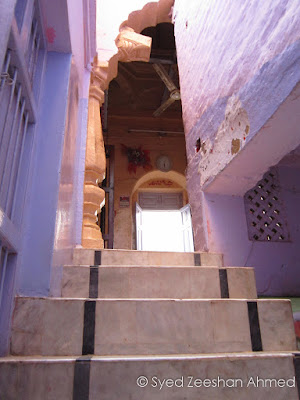
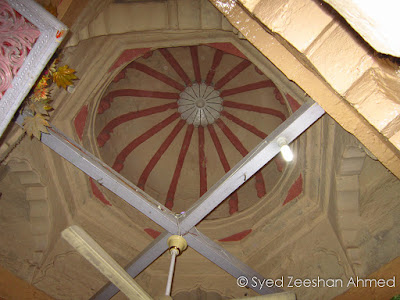
This particular temple is a Shiv temple (dedicated to the Hindu god Shiv/ Shiva, one of the primary deities in the Hindu pantheon of gods and goddesses). A Shiv-ling, along with a sculpture of Shiva’s sacred bull Nandi, made from white marble, which are supposedly as old as the temple itself, are in a small quarter, and can be accessed by devotees or those who want to visit. The quarter is also filled with beautiful paintings depicting various deities, including Krishna, Durga, and Ganesh.
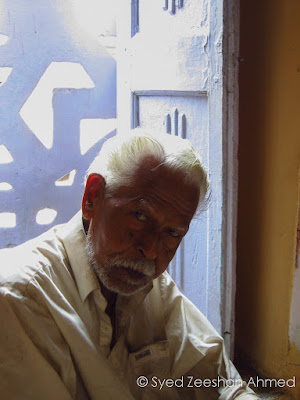
I also learned that the temple holds a weekly prayer and bhajan (hymns) session weekly, on Monday. Also, an annual festival is also organized attracting hundreds of devotees.
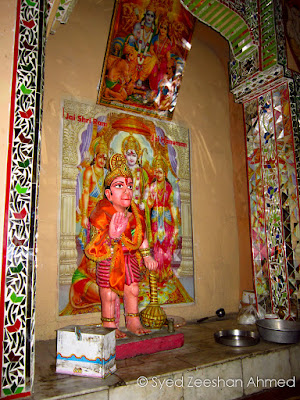
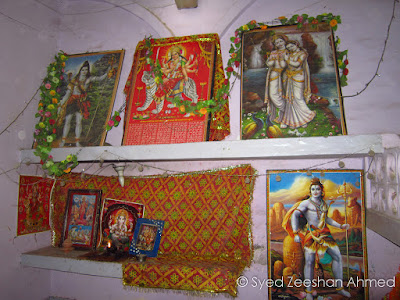
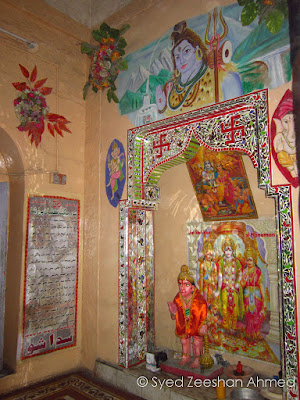
The temple’s history is marred with tragedy. The temple, I learned, remained closed for decades, after the partition. The Bhil community, in whose lives the temple had played an important part, and who had decided to stay in the neighborhood after the partition, their outcry was ignored. It was only in 90s that it was reopened after a legal struggle, which was led by locals which included people belonging from both Hindu and Muslim backgrounds. Unfortunately, this reopening created a new issue, amongst the Hindus themselves. The usual visitors to the temple, and the ones who also helped in reopening its doors, belonged to Harijan community. This angered the other Hindus who did not belong to the Harijan community. Fortunately, for the temple, and the devotees, these issues were put to rest.
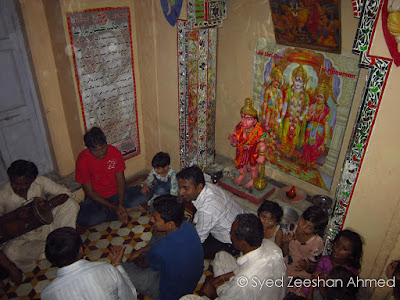
The temple, which now stands alone beside modernity, was originally a part of a huge Dharamshala complex. A guesthouse for devotees, along with other temples were a part of it. The land-grabbing became the reason all these other structures vanished, and were replaced by the buildings which stand there today. There was no help or opposition from the government’s Auqaf authority, too. A part of the temple, right in the front, is also under occupation and is being used as a junk-store. The constant dwelling of troublemakers around the temple also creates problems for young girls and women who either pass by the temple, or go inside.
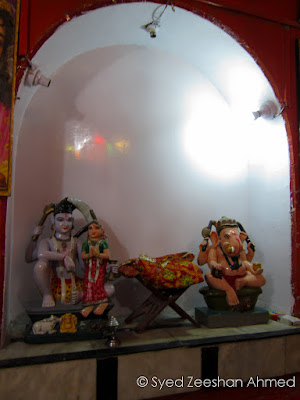
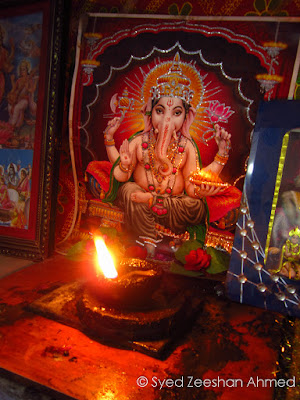
According to the other caretakers it was illegally occupied, and all their pleas to Auqaf authority have been ignored. I noticed how there is a serious lack of space, which the caretakers repeatedly mentioned. They said it would be great if they could get the space back, as it will help accommodating the devotees, particularly during the festival.
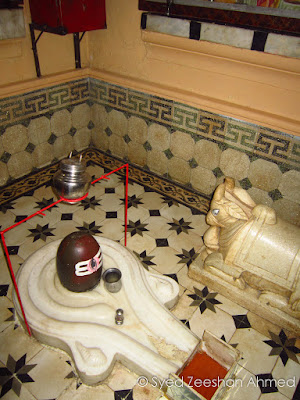
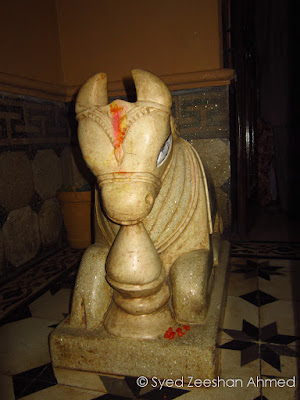
I also heard from a few regular visitors how the temple has been often abused by drug-addicts, who violate the sanctity of the temple, and cause nothing but trouble for the visitors.
It is indeed sad to see how such an important piece of heritage is being handled. A place holding so much history, and traces of the era gone by, is in a depressing state, asking questions from those who were supposed to protect it, and keep it from harm.
___________________________
Courtesy: Zeeshan Ahmed (Posted on his personal blog site on 25th February 2016 – All photos by the author)